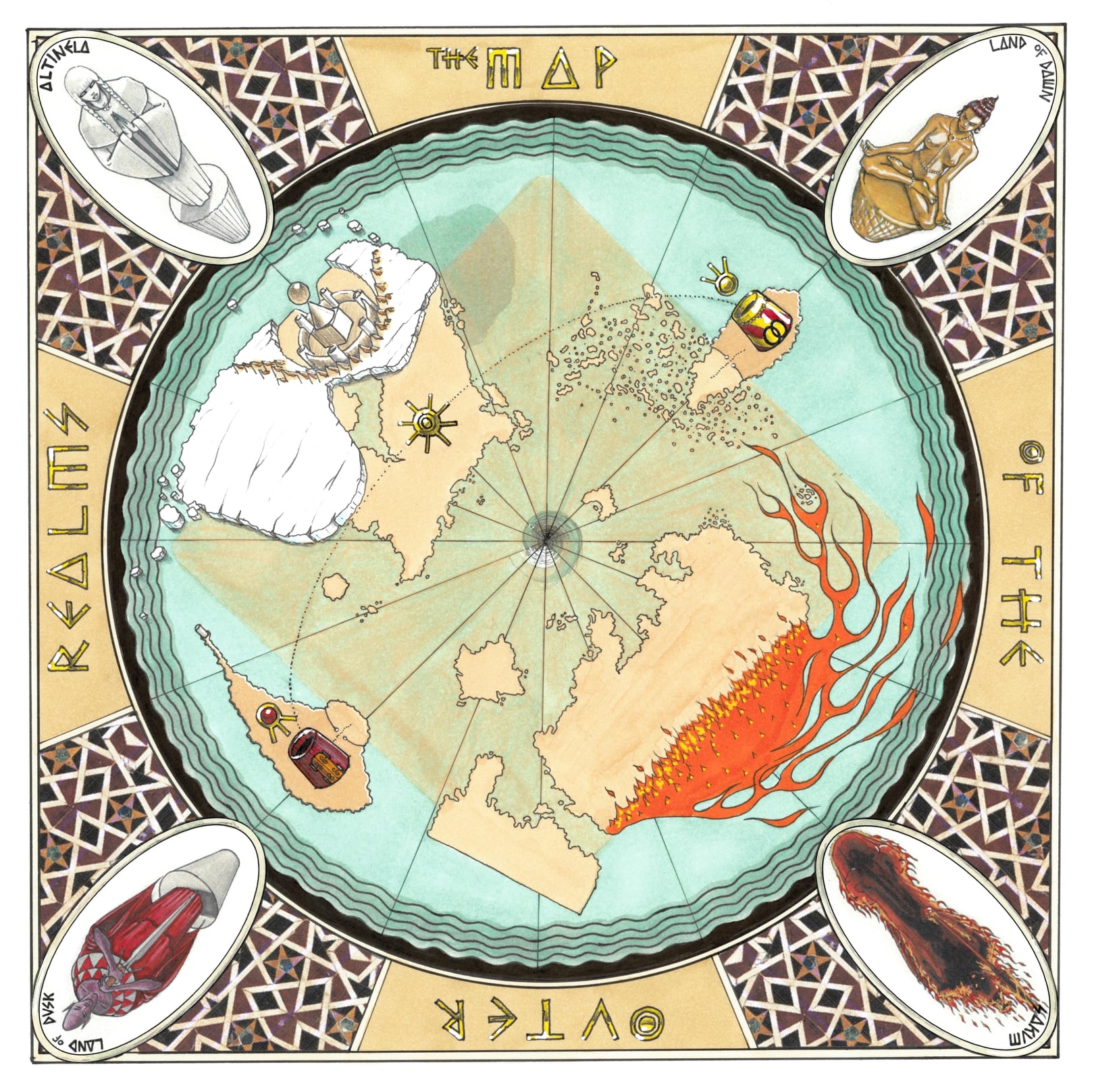The human settlements on Jrustela grew in number and population. Each settlement was free and independent. At first, this was no problem as there was land and resources enough for all, but within two generations conflicts grew. In 646 the quarrelling rulers and wizards of the city-states and tribes of Jrustela met to reach a lasting settlement. Unexpectedly, the conclave created or was presented with a new ecumenical syncretic form of Hrestoli Malkionism called the Abiding Book, which presented the Invisible God as an utterly simple, ineffable, unknowable entity which is both the creative source of existence and the teleological end of all existing things. The Invisible God created the Runes, the Powers, Elements, and Conditions, which slowly commingled and degenerated into gods, spirits, and mortals. All of creation was made understandable and knowable – with the exception of the Invisible God itself of course.
This Abiding Book presented the true teachings of Malkion, and was consistent with the teachings of Hrestol, Zzabur, Gerlant, and Arkat – without need for the dangerous mysticism and irrational contradictions of Stygianism. The Abiding Book was a framework for understanding, and was an open invitation for exploring the cosmos. Everything could have its proper place within the framework of the Abiding Book, and the limited perspectives of the various barbarian cults could be put together to flesh out that framework. About this time, the Jrusteli began experimenting with seagoing ships and began their first tentative challenges to the Waertagi monopoly over the oceans.

![]()
![]()
Note that Abiding Book Hrestolism was not some narrow fundamentalist monotheism – I’d imagine it something like a cross between Herbert’s Orange Catholic Bible with Aristotle’s Metaphysics and the Upanishads.
“What is the origin of this world?
The Invisible God, said he. Verily, all things here arise out of the Invisible God. They disappear back into the Invisible God, for the Invisible God alone is greater than these, the Invisible God is the final goal.”
“What are the gods?
They are expansions of the Invisible God into various forms, each with a certain quality. We call each the Runes. The Runes devolved to form the Sruvuli or combined to form the Burtae – these Sruvuli and Burtae became so degenerate that they forgot the Invisible God and fought each other in the Gods War, nearly destroying the cosmos.”
“Lead us from the unreal to the real. Lead us from darkness to light. Lead us from death to immortality.”
